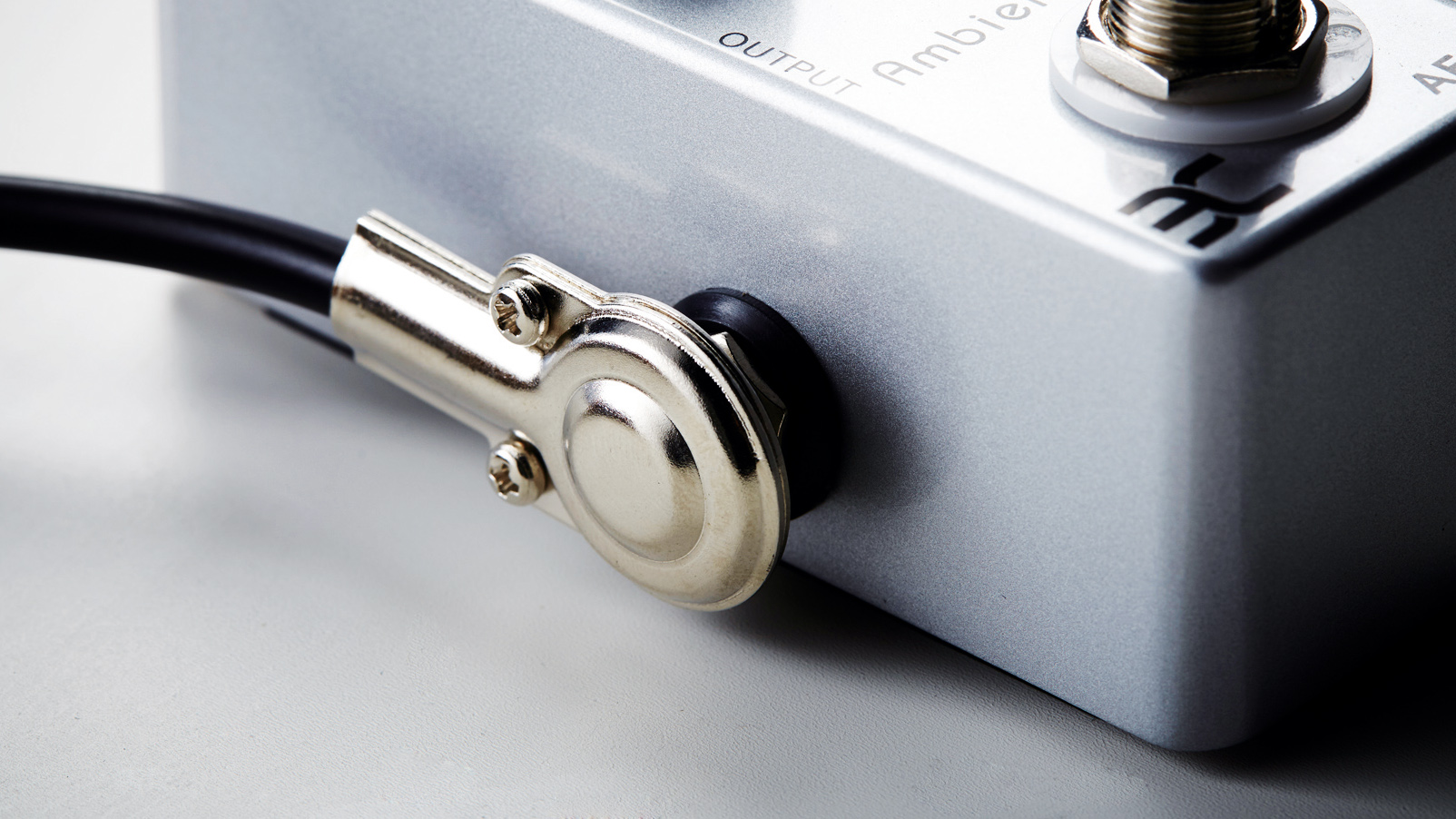How to arrange a mini pedalboard
Shrink your 'board with our mini-pedal tips

Introduction
Mini pedals are so hot right now: not only are they cheap as (integrated circuit) chips, but their teeny size means you can cram more on your pedalboard or shrink your existing rig - and that's where we come in.
On the following pages, we'll guide you through everything you need know when putting together your own mini pedalboard, including sizing, cabling, power and bypass.

Tread the 'boards
Once you have the pedals, you need something to stick 'em on. The Pedaltrain Nano (£45, as seen in the intro), Hotone Skyboard Junior and Diago Sprinter (both £39.99) all offer similar dimensions.
The most creative mini 'board we've seen is Mooer's Stomplate Mini (£79.99), which offers a foldable design, allowing you to arrange up to 10 pedals in two rows, one long row, or spread around you. All these options come with Velcro for attaching bonding pedal to 'board, and gigbags for easy transport, too!

The cable guide
If you're working with a small pedalboard, not only will you want short cables, but you'll want small connectors, too. The most compact connectors we've found are six-inch Hosa low-profile patch cables (£4.95 each), with pancake jacks.
If you want to go the build-your-own route, Diago's pricey Patchfactory – the £64.99 kit makes five cables – also offers compact plugs, plus you can wire them to whatever length you desire.

Power mad
You have your minis, but you can't use batteries with 'em… Yep, you're gonna need a power supply.
Before you invest, you need to work out how much each pedal draws, measured in mA - you should be able to find the figure buried away in each pedal's manual. Add all the mA draws up, and that's how much your pedals need.
If you're lucky – and you're not running any power-hungry digital delays or reverbs - you could get away with buying a daisy chain cable and running all your pedals off a standard nine-volt 'wall-wart' power supply, provided it's low noise and designed for fuelling stompboxes.
If you need more juice, we'd point you towards the Diago Micropower9 (£32.99), which puts out a mighty 1,000mA, or the Pedaltrain Volto (£79), a rechargeable supply that delivers 2,000mA - simply charge it before a gig, and you can run your minis without a power lead trailing from your pedalboard: ace!
If you're experiencing hum or noise from running all your pedals from one supply, you may need an isolated PSU, where each pedal receives its own supply via the use of a transformer.
A lot of these are pretty bulky, but smaller solutions do exist, such as T-Rex's Fuel Tank Junior (£110), which features five isolated outputs, and the Cioks DC5 Link (£112.50), which offers nine, 12 and 18-volt outputs - both fit under a Pedaltrain Nano or Mini.
Don't worry if you have more pedals than outputs, too; you can still daisy chain from one output, provided you don't get any noise or exceed each output's mA capacity.

True why-pass
True bypass has become a buzzword in recent years, and in theory, it's a good thing: when your pedal's off, the signal passes directly from the input to the output, without going through any tone-altering circuitry.However, that also means you're introducing an almighty length of cable once you add up all those patch leads, which will suck the treble right out of your preciously put-together rig.
The solution is to introduce a buffered pedal to your 'board - a buffer is essentially a device that converts a high-impedance signal (ie, the signal from your pickups) into a low-impedance signal, which allows it to travel further without losing high-end. However, getting one onto a compact pedalboard isn't easy, since true bypass is the standard on the most mini pedals.
Short of adding one of the few minis with buffers (such as Joyo's JF-318 Quattro or JF-317 Space Verb), the best solution is to either buy a dedicated mini buffer (such as the JHS Pedals Little Black Buffer, £69) or leave a pedal permanently on - if you're a guitarist who can't play without a boost, EQ or overdrive early in the chain, you're already set. And if you use a guitar with active pickups, their built-in preamp will carry your signal through all the pedals, no sweat.
Mike is Editor-in-Chief of GuitarWorld.com, in addition to being an offset fiend and recovering pedal addict. He has a master's degree in journalism, and has spent the past decade writing and editing for guitar publications including MusicRadar, Total Guitar and Guitarist, as well as a decade-and-a-half performing in bands of variable genre (and quality). In his free time, you'll find him making progressive instrumental rock under the nom de plume Maebe.


